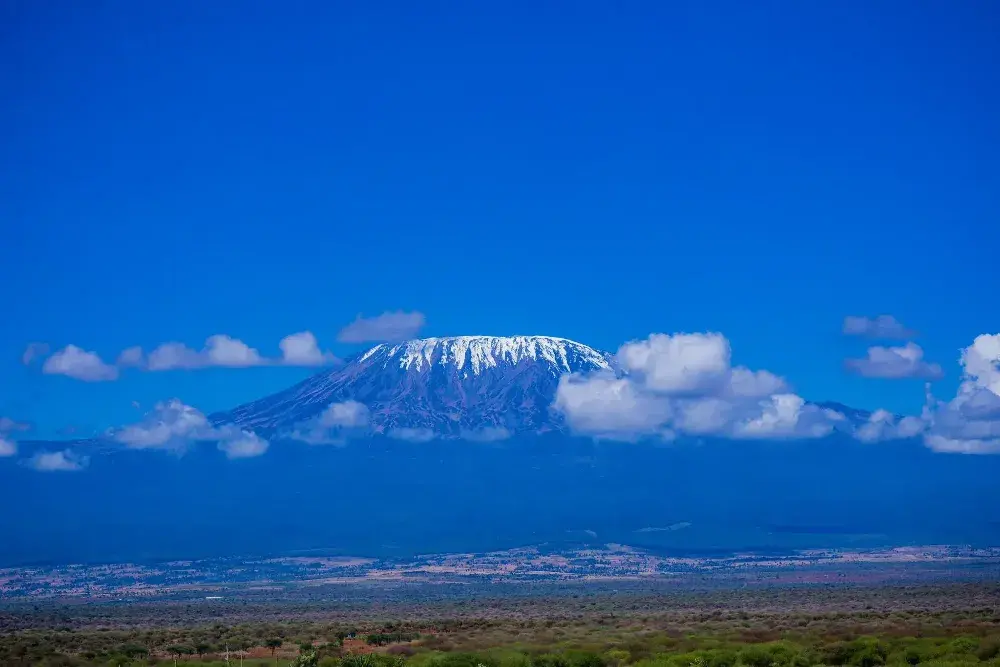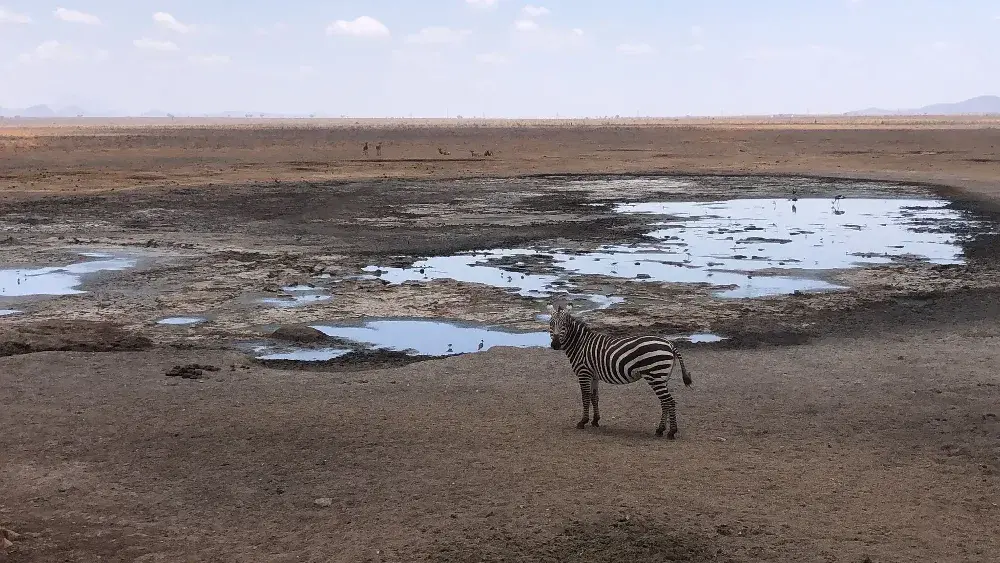Kenya, another of our top destinations for a volunteering experience, is a country located in East Africa known for its remarkable geographic and cultural diversity. With a population of 54 million people, it boasts a rich mix of ethnicities and cultures.
The country is famous for its breathtaking landscapes, ranging from the vast savannas of Maasai Mara National Park, home to the Great Migration, to the idyllic beaches of the Indian Ocean in Mombasa. Kenya also features the majestic Mount Kenya, the second-highest peak in Africa, and the Great Rift Valley, known for its unique geology and wildlife.
Today, we bring you some must-sees if you choose Kenya as your destination for this unforgettable experience, which you can enjoy during your free time after working on various projects.
WHAT SHOULDN’T YOU MISS?
Maasai Mara National Park
Maasai Mara National Park, located in southwestern Kenya, is one of the world’s most iconic safari destinations. It lies in the Great Rift Valley region and is part of the Serengeti ecosystem, extending into Tanzania. Access to the park can be by road from Nairobi, which takes about 5-6 hours, or by charter flights to airstrips within the park.
The highlight of Maasai Mara is the Great Migration, occurring from July to October. During this period, around two million wildebeest, zebras, and gazelles cross the Mara River from the Serengeti.
Additionally, the park is home to the “Big Five” (lion, leopard, elephant, buffalo, and rhino), as well as cheetahs, hippos, giraffes, and a wide variety of antelopes. The birdlife is equally rich, with over 450 species recorded.
The park is also known for its vast plains filled with acacias, hills, and the Mara River, offering spectacular views, especially at sunrise and sunset.
Named after the Maasai people, who have inhabited the region for centuries, travelers can learn about Maasai culture through visits to traditional villages, where you can see their customs, crafts, and dances.
It’s an extraordinary destination offering an unparalleled safari experience. Its abundant wildlife, stunning landscapes, and rich Maasai culture make it a must-visit for any nature and adventure lover.

Mount Kenya
Mount Kenya, the second-highest peak in Africa after Kilimanjaro, is ideal for hiking and climbing.
Mount Kenya National Park is a UNESCO World Heritage Site recognized for its ecological and cultural significance. It is located about 150 kilometers northeast of Nairobi, with the nearest town being Nanyuki. The park can be accessed through several gates, the most popular being Sirimon Gate, Naro Moru Gate, and Chogoria Gate. Most visitors arrive by car or public transport from Nairobi.
Its three main peaks are:
- Batian Peak (5,199 meters), the highest.
- Nelion Peak (5,188 meters).
- Lenana Peak (4,985 meters), the most accessible for hikers.
The surrounding area is renowned for its biodiversity. The lower zones are covered by dense forests, while the higher areas feature unique alpine vegetation. Wildlife includes elephants, buffaloes, antelopes, and various species of monkeys, as well as many birds.
The most popular route is the ascent to Lenana Peak. Although it doesn’t require technical climbing skills, it is physically demanding and requires acclimatization to the altitude.
You can also visit local communities, such as the Kikuyu, who have a historical and spiritual connection to Mount Kenya and learn about their culture and traditions.
Amboseli National Park
Amboseli National Park, located in southern Kenya near the Tanzanian border, is another of the country’s iconic safari destinations. Situated about 240 kilometers southeast of Nairobi, it can be accessed by car (4-5 hours) or by charter flights to airstrips within the park.
Covering around 392 square kilometers, it is known for its stunning views of Mount Kilimanjaro, Africa’s highest mountain, situated just across the border in Tanzania. Amboseli is famous for its vast plains, wetlands, and forests, and notably for its large herds of elephants that can be observed up close. The elephant population in Amboseli is one of the most studied and protected in the world.
Besides elephants, there is a wide variety of wildlife, including lions, leopards, cheetahs, buffaloes, giraffes, zebras, hippos, and a diversity of antelopes.
Amboseli is also a paradise for bird watchers. Water birds, such as pelicans, herons, and flamingos, are common in the park’s wetlands.
The swamps and lagoons of Amboseli are vital for wildlife survival during dry seasons.
Another unique feature of Amboseli is the views of Kilimanjaro, especially at sunrise and sunset.
Nairobi, the capital of Kenya, combines modernity and tradition. Founded in 1899, Nairobi has grown to become an important economic and cultural hub in East Africa. Located in south-central Kenya, it enjoys a temperate climate year-round.
This city began as a railway camp and has evolved into a metropolis of over four million inhabitants.
Some popular sites to visit in Nairobi are:
- Nairobi National Park
- David Sheldrick Wildlife Trust
- Giraffe Centre
- National Museum of Kenya
- Bomas of Kenya
- Kibera
- Maasai Market
You can also enjoy its nightlife with numerous bars, clubs, and restaurants. Areas like Westlands and Karen are popular among locals and tourists for their variety of entertainment options.
It’s a city that offers a fascinating mix of urban and natural experiences, from its national parks to its markets and museums.

Lake Nakuru
Lake Nakuru, located in central Kenya, is another must-see. It is in the Rift Valley, about 160 kilometers northwest of Nairobi. The city of Nakuru, which serves as the park’s gateway, is a short drive away.
It is a shallow alkaline lake, part of the Great Rift Valley lake system. It is famous for its concentrations of flamingos, which can number in the hundreds of thousands, creating a spectacular pink fringe along the lake’s shores.
It’s also one of the best places in Kenya to see rhinos, both white and black. It is an important conservation area for these endangered species.
The park features a notable euphorbia forest, habitat for many bird species and small mammals.
The surrounding hills and cliffs, such as Baboon Cliff and Lion Hill, offer spectacular views of the lake and its surroundings.
The park can be visited year-round, but the dry season (June to September) is ideal for wildlife viewing.
Mombasa, Kenya’s second-largest city, located on the Indian Ocean coast, is known for its paradisiacal beaches, culture, and mix of African, Arab, and Indian influences.
Founded over a thousand years ago, Mombasa has been an important port and commercial center. Influenced by various cultures, including Swahili, Arab, Persian, Portuguese, British, and Indian, this diversity is reflected in its architecture, cuisine, and traditions.
Some popular sites to visit in Mombasa are:
- Fort Jesus
- Old Town of Mombasa
- Paradise beaches (Diani Beach or Nyali Beach)
- Mombasa Marine National Park
- Haller Park
You can also enjoy its cuisine, go shopping, or experience its nightlife. Mombasa combines incredible beaches, rich history, and a vibrant cultural mix.
There are many more must-sees if Kenya is on your itinerary; this country will make you fall in love with its landscapes, culture, and especially its people.




